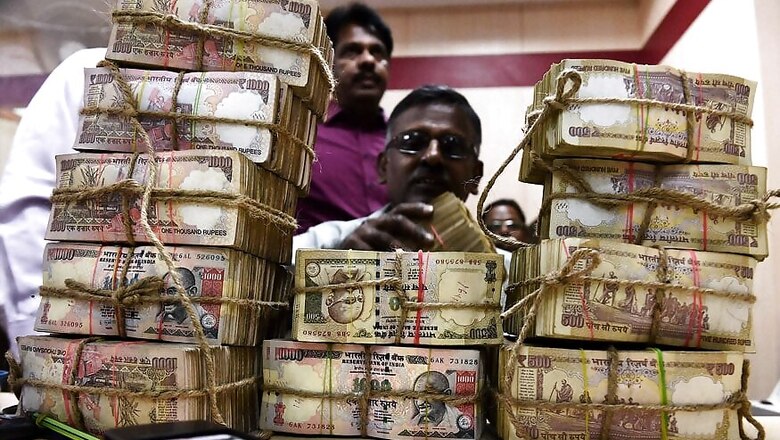
views
The Global Financial Integrity is a Washington DC-based research and advisory organisation that produces analysis on illicit financial flows. Its 2010 report on black money in India is one of the few that estimates the size of the black economy and illicit financial transfers out of India.
The Drivers and Dynamics of Illicit Financial Flows from India: 1948-2008, authored by chief economist Dev Kar estimated the amount of illicit financial flows in the period 1948-2008 at $462 billion. These are the proceeds of crime, corruption and tax evasion. The report also said that the faster rates of economic growth since reforms started in 1991 have led to a deterioration of income distribution and an acceleration in the pace of illicit flows from the country, which GFI has pegged at $123 billion in the decade of 2001-2010. Chief economist Dev Kar answered some questions about black money and demonetisation in an email interview with News18: Can you explain the terms 'black money', 'black wealth', 'black income' and any other facets of the illicit economy?
The size of India's underground economy is widely estimated to be around 50% of official GDP, or around $ 1 trillion. There are some lower estimates of around 25% of GDP but definitions differ. If one includes India's vast informal sector (where a majority of the country's labor force is employed), then the 50% figure is realistic. Some estimates do not include the informal sector where activities are legitimate and not illegal (from the corner kirana stores to rickshaw and taxi drivers to farm labor). But considering that workers in the informal sector do not pay taxes, they are, to a large extent, evading applicable taxes due to shortcomings in collection mechanisms. In your 2010 report you gave some figures for India's black economy. Have you made any upgrades to those figures?
Please note that there is a huge difference between measurable black money and black money as a concept. Our estimates refer to those that are measurable such as trade mis-invoicing and external leakages from the country. The latter includes bribery and kickbacks which have been transferred electronically by shady banks and nonbanks for a fee. But there is no way economists can quantify each such source. Instead, such leakages from the balance of payments are estimated as a lump-sum. Please note also that deliberate illegal trade mis-invoicing constitutes around 70-80% of measurable black money outflows. What is your view on demonetisation? How useful is it as an economic tool?
The IMF has welcomed the move. Most academics differ. Sometimes the IMF welcomes government policy initiatives in order to show solidarity with a government's larger objectives (trying to reign in corruption). Academics are under no such compulsion or illusion.Where does India stand in the 'black money league tables' vis-a-vis other developing nations (BRICS) and developed nations?
India does not do very well on the World Bank governance indicators although there has been a noticeable improvement in 2015 relative to 2014. India ranks no. 4 among top ten exporters of black money from developing countries. This ranking may show a significant decline when we correct for data issues related to Switzerland in the forthcoming update on black money transfers.


















Comments
0 comment